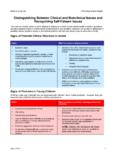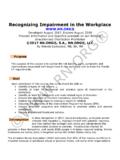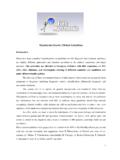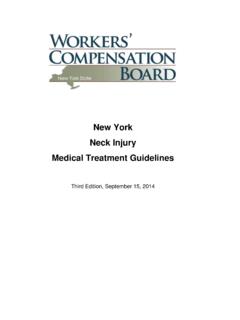Transcription of Recognizing and Managing Common Health …
1 E-348. 06-05. Recognizing and Managing Common Health Problems of beef cattle Floron C. Faries, Jr. Professor and Extension Program Leader for Veterinary Medicine, The Texas A&M University System M. any Health problems in beef cattle can be Observations: The onset of pink eye is sudden, managed successfully if they are detected beginning with an excessive flow of early. cattle owners can prevent or minimize tears. The animal holds the eye losses by taking steps to keep the problems from partially closed, rubs the eye and recurring or spreading to the rest of the herd. seeks shaded areas. Soon an ulcer develops in the central area of the Below are Common problems found in beef cattle as well cornea and an opaque ring develops as the probable causes of those conditions and suggested around the ulcer. Within 48 hours of measures to prevent recurrence. onset, the entire cornea becomes cloudy.
2 My cows' eyes Next, the lining of the eyelids becomes are cloudy and runny. red with mucus and pus. As the ulcer When cattle have cloudy, runny eyes, the inflamed and deepens and extends completely painful eyeballs and eyelids are probably infected with a through the cornea, the eye ruptures virus or bacterium or damaged from sunlight or cancer. and loses fluid, and the eyeball These conditions include pink eye, IBR virus eye, cancer collapses. The infection may affect one eye or photo eye. or both eyes. Specific diagnosis and proper treatment may require Management: The infected cattle must be isolated close observation, available history, laboratory testing and treated immediately by a and professional assistance. veterinarian to eliminate the infection and prevent spread to other cattle . Pink eye (infectious keratoconjunctivitis). Although sporadic cases of eye diseases occur in all IBR virus eye (infectious bovine seasons of the year, this highly contagious bacterial rhinotracheitis).
3 Disease is most Common during the summer. The IBR virus is transmitted through the air and can spread rapidly through the herd. It causes upper respiratory infections, and it is most prevalent in the fall and winter. Recognizing and Managing Common Health Problems of beef . Observations: In the early acute stage, a few cattle Management: Protect the animal from sunlight until its may develop cloudy corneas, similar eyes and skin have healed. Shelter it to pink eye. The opacity spreads during the day and allow it to graze on inward from the outer edge of the pasture at night. cornea, and there is no ulceration. Management: Isolate the affected animals until My calves have areas the viral infection runs its course, of hair loss with skin lesions.. and vaccinate the whole herd and Calves commonly become infected with ringworm purchased replacements. fungus and wart virus.
4 These two infectious, contagious conditions are easily recognized and differentiated by Cancer eye (squamous cell carcinoma) the appearance of localized hair loss with skin lesions. Cancer often appears as smooth plaques on the eyeball In cases where there is generalized hair loss with and ulcers or horn lesions on the eyelids. It occurs more skin lesions, possible causes other than ringworm or often in cattle with no eye pigment and those that are warts include photosensitization, dietary deficiencies, constantly exposed to bright sunlight. infections of worms and infestations of horn flies and Observations: As in cases of pink eye, cancer eye lice. causes an excessive flow of tears. This cancer can be identified by the Ringworm fungus (dermatophytosis). appearance of the lesions on and near In the early stages, a fungus infection of the skin often the eye. The cancerous growths develop goes unnoticed because the affected areas are small and on the third, upper and lower eyelids slightly raised with roughened hair.
5 Infected cows often and eyeball, and they spread to internal serve as sources of the fungus, which is transferred by lymph nodes and organs. direct contact to calves. Management: Early detection is necessary for heating Observations: After several weeks of the fungus or freezing therapies or for surgical infiltrating the hair follicles, the hair removal of the tumor alone. In chronic falls out, leaving distinct circumscribed, cases with more extensive involvement, grayish lesions. The scaly lesions the entire eyeball and eyelids must be coalesce to form large patches of hair removed. loss at least 3 inches in diameter. They are often located on the face and neck Photo eye (photosensitization) and are more Common in young cattle . This noninfectious condition is a hypersensitivity Management: Although the infection tends to clear up to sunlight after ingestion of various plants or spontaneously after several months, administration of certain drugs.
6 Separate and treat the affected calves Observations: In addition to cloudiness of the cornea, with a prescribed medication to prevent signs of photo eye include sunburn of transmission to the others. nonpigmented eyelids, nose, teats, vulva and areas of the head, body and legs. If Warts (papillomatosis). the affected cattle are exposed to Warts are fibrous tumors of the skin and mucous sunlight for prolonged periods, membranes and are caused by many strains of the blindness and severe skin damage will papilloma virus. The virus is usually transmitted to result. calves by direct contact from infected cows. It also can be Recognizing and Managing Common Health Problems of beef . transmitted by contaminated instruments that puncture Management: To prevent recurrence of this cold-season the skin and by biting flies such as horn flies and stable problem , take steps to reduce the horn flies.
7 Fly population during the warm seasons. Observations: The cauliflower-type growths occur primarily on the head, neck and I have occasionally shoulders, in the mouth and vagina, a cow or a bull and on the teats, vulva and penis. crippled on one foot.. Management: To prevent transmission to other calves, A cow or bull with a lame foot should be examined isolate those with warts. Over a period closely. Pick up the foot with a rope, and wash and of 3 to 12 months, the affected calves examine between the toes carefully, looking for a foot build immunity against the virus in the crack, a corn, swelling, heat or a discharge. You will need warts and skin. Once the immunity kills professional assistance to differentiate some of the other the viruses, the warts dry and slough. abnormal conditions of the foot. Unobservable problems inside the foot include bruises, Every winter, my cows rub abscesses, fractures and foot founder, or laminitis.
8 The their heads, necks and lameness may also be related to long toes as well as joint inflammation of the leg, including the hip on the rear shoulders. and shoulder on the front. Even though lice are known in the winter to cause cattle to itch and rub on objects such as fences, posts, trees and barns, another Common cause of itching and rubbing is Foot crack (web tear). the aftermath of the allergic dermatitis produced during This condition often occurs after cattle walk on rough the previous summer and fall by a horn fly infestation. terrain or when a bull places its weight on the foot when mounting for breeding. These actions commonly spread the toes wide apart and cause the skin to tear. Also, long Horn fly allergy (allergic dermatitis) toes predispose to the likelihood of excessive spreading During the horn fly season, cattle often develop a skin of toes. allergy to the saliva of the biting horn flies.
9 After several weeks, an inflammatory reaction occurs in the skin, and Observations: If the problem is not a corn or foot rot, many hair follicles are destroyed. check for signs of foot crack, along with swelling and heat of the foot. Observations: Before the damaged hair falls out during The web of skin between the toes is also the winter, the retained hair causes an likely to be cracked deeply into sensitive itch sensation, and the cattle rub their tissue. faces, necks and shoulders from December through March. As a result of Management: The damaged tissue must heal from the rubbing these areas, the hair coat inside out. To prevent further tearing, becomes sparse, and irritated skin the cow or bull must be confined for a lesions develop. few weeks to limit walking and the toes trimmed and taped together. Once the dead hair is removed by rain and rubbing, a normal hair coat returns.
10 If no crawling lice are on the skin or lice eggs are glued to the hairs, the diagnosis Foot rot (necrotic pododermatitis). is based on a history that the cows had a horn fly If the problem is not foot crack, the likely problem is infestation the previous year. foot rot, a bacterial disease of the foot. During warm, wet weather, the bacteria in manure mixed with mud Recognizing and Managing Common Health Problems of beef . commonly gain entry through tiny cracks and abrasions Infectious lung disease (pneumonia). of the skin between the toes and heel bulb, causing Pneumonia is a highly complex, contagious disease swelling and dead tissue. and may be caused by one of several viruses in concert with various bacteria. Pneumonia caused by bacteria is Observations: The signs of foot rot include a hot, generally serious. swollen and painful foot with pus discharge and a dead odor, fever and Observations: Fever, coughing and labored breathing loss of appetite and body weight.







